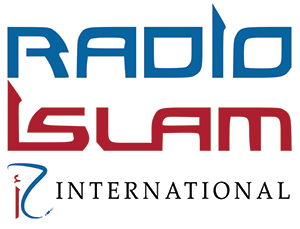This Thursday the 20th of July is International Moon Day, and depending on sightings of the moon it could also be the first of Muharram, heralding the start of a new Islamic year. Since the beginning of the new Islamic month is determined by the sighting of the moon, we decided we will take a look at some interesting aspects about the moon this week.
Moon, Earth’s sole natural satellite and nearest large celestial body. Known since prehistoric times, it is the brightest object in the sky after the Sun. It is designated by the symbol ☽. Its name in English, like that of Earth, is of Germanic and Old English derivation.
The Moon’s desolate beauty has been a source of fascination and curiosity throughout history and has inspired a rich cultural and symbolic tradition. In past civilizations the Moon was regarded as a deity, its dominion dramatically manifested in its rhythmic control over the tides and the cycle of female fertility. Poets and composers were invoking the Moon’s romantic charms and its darker side, and writers of fiction were conducting their readers on speculative lunar journeys long before Apollo astronauts, in orbit above the Moon, sent back photographs of the reality that human eyes were witnessing for the first time.
Centuries of observation and scientific investigation have been centred on the nature and origin of the Moon. Early studies of the Moon’s motion and position allowed the prediction of tides and led to the development of calendars. The Moon was the first new world on which humans set foot; the information brought back from those expeditions, together with that collected by automated spacecraft and remote-sensing observations, has led to a knowledge of the Moon that surpasses that of any other cosmic body except Earth itself. Although many questions remain about its composition, structure, and history, it has become clear that the Moon holds keys to understanding the origin of Earth and the solar system. Moreover, given its nearness to Earth, its rich potential as a source of materials and energy, and its qualifications as a laboratory for planetary science and a place to learn how to live and work in space for extended times, the Moon remains a prime location for humankind’s first settlements beyond Earth orbit.
Distinctive features
The Moon is a spherical rocky body, probably with a small metallic core, revolving around Earth in a slightly eccentric orbit at a mean distance of about 384,000 km (238,600 miles). Its equatorial radius is 1,738 km (1,080 miles), and its shape is slightly flattened in such a way that it bulges a little in the direction of Earth. Its mass distribution is not uniform—the centre of mass is displaced about 2 km (1.2 miles) toward Earth relative to the centre of the lunar sphere, and it also has surface mass concentrations, called mascons for short, that cause the Moon’s gravitational field to increase over local areas. The Moon has no global magnetic field like that of Earth, but some of its surface rocks have remnant magnetism, which indicates one or more periods of magnetic activity in the past. The Moon presently has very slight seismic activity and little heat flow from the interior, indications that most internal activity ceased long ago.
The Moon’s mean density is 3.34 grams per cubic cm, close to that of Earth’s mantle. Because of the Moon’s small size and mass, its surface gravity is only about one-sixth of the planets; it retains so little atmosphere that the molecules of any gases present on the surface move without collision. In the absence of an atmospheric shield to protect the surface from bombardment, countless bodies ranging in size from asteroids to tiny particles have struck and cratered the Moon. This has formed a debris layer, or regolith, consisting of rock fragments of all sizes down to the finest dust.





0 Comments